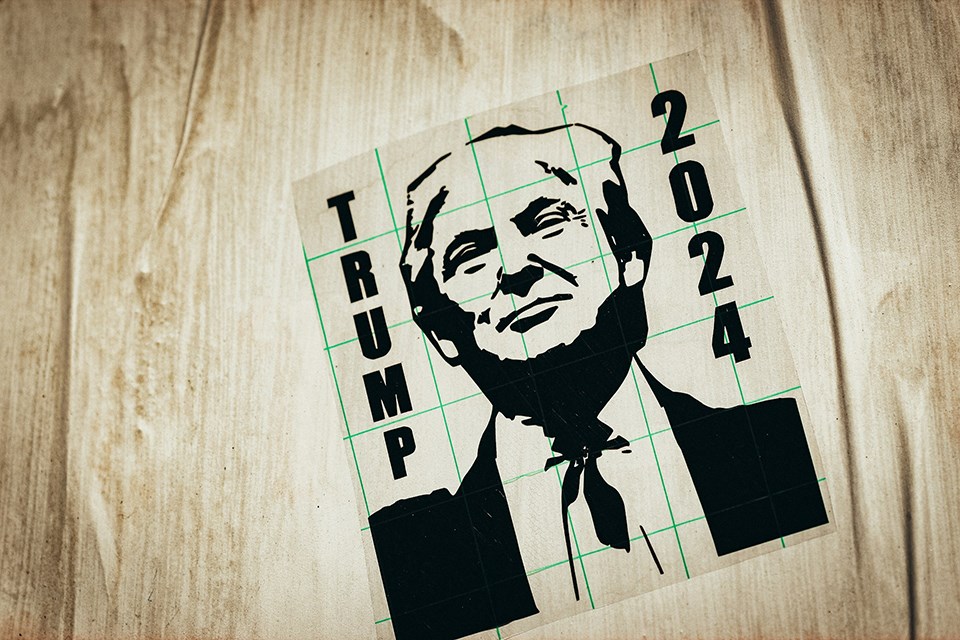With apologies to the great Canadian political cartoonist Terry Mosher, “O.K. Everybody take a Valium.”
Donald Trump’s latest threat of imposing 25 per cent tariffs on all goods from Canada and Mexico is not the trade apocalypse some fear. While his bullying tactics are as transparent as they are hackneyed, Trump excels at one thing: getting people stirred up.
On his Truth Social platform, Trump threatened tariffs unless Canada and Mexico addressed the “thousands” of illegal immigrants and massive amounts of drugs entering the U.S. His language was crude, impulsive, and anti-diplomatic – hallmarks of his lifelong pattern of bluster masquerading as negotiation.
Predictably, media outlets erupted, politicians scrambled to respond, and markets wobbled. The Canadian dollar dropped, trade experts forecasted economic doom, and Ontario Premier Doug Ford and Opposition Leader Pierre Poilievre weighed in with panicked reactions. Mission accomplished for Trump, whose tactics are designed to provoke overreactions.
But let’s take a step back. Trump’s threat was conditional, not definitive. He did not say tariffs would be imposed immediately but rather that they would remain in effect if Canada and Mexico failed to act. This nuance matters. Canada’s response should be calm, measured, and strategic – qualities already evident in how the Trudeau government is handling the situation.
Trump’s negotiating tactics are neither innovative nor built for long-term success. As outlined in The Art of the Deal, written with journalist Tony Schwartz, Trump thrives on creating spectacle and controlling narratives. “The more sensational the better,” he boasts, a strategy that carried him to the U.S. presidency and continues to define his approach.
But these tactics often backfire. Negotiating expert Leslie Mulligan describes Trump’s style as “old-school hardball,” which may work for a one-time deal but fosters resentment and undermines trust. Analysts like Ronald Brownstein call it “hostage taking,” noting that Trump frequently threatens to dismantle existing policies to extract concessions. This approach is more blackmail than negotiation – a high-stakes gamble that hurts all parties involved.
Trump’s tariff threats are no exception. While such measures would significantly harm Canada and Mexico, they would also disrupt U.S. manufacturers and consumers. In this sense, Trump’s threats lack credibility, as his adversaries know the damage would be mutual. The key is not to panic, as this only gives him the upper hand.
Rather than reacting rashly, Canada’s best strategy is to project composure and professionalism. Foreign Affairs Minister Mélanie Joly exemplified this by emphasizing the importance of border safety without directly engaging with Trump’s rhetoric. Immigration Minister Marc Miller calmly pointed out that the bigger problem lies at the U.S. southern border.
Consider the numbers: in 2023, U.S. border patrol stopped about 24,000 individuals attempting to cross the Canadian border illegally – less than two per cent of the 1.5 million apprehended at the Mexican border. Similarly, only 43 pounds of fentanyl were seized at the Canadian border compared to over 21,000 pounds at the Mexican border. These figures demonstrate that Canada is not the primary issue, a point Canadian officials can reinforce diplomatically.
By avoiding escalation and showing a willingness to address legitimate concerns, Canada allows Trump to declare a “win.” This approach may feel counterintuitive, but it works with narcissistic personalities who crave validation. Assuring Trump that Canada is taking his demands seriously, even if they are exaggerated, helps defuse the situation without jeopardizing national interests.
While calm diplomacy is critical in the short term, Canada must also prepare for the long haul. Trump’s erratic leadership underscores the need for Canada to diversify its trade relationships. Over-reliance on the U.S. leaves Canada vulnerable to the whims of a volatile president. Exploring new partnerships with Europe, Asia, and other regions is not just prudent – it’s essential for future prosperity.
Canada’s trade diversification efforts are already bearing fruit. Agreements like the Comprehensive Economic and Trade Agreement (CETA) with the European Union and the Comprehensive and Progressive Agreement for Trans-Pacific Partnership (CPTPP) offer opportunities to reduce dependence on the U.S. Trump’s threats, ironically, may accelerate these efforts as Canada seeks stability in its trade relationships.
Donald Trump’s threats should not be dismissed, but neither should they provoke panic. His tactics are designed to unsettle and disrupt, but they are often more bark than bite. Canada’s calm and measured response so far is the right approach, avoiding the trap of playing into Trump’s theatrics.
In the longer term, Canada must continue building stronger trade relationships outside North America. Diversification will not only protect the economy from future disruptions but also position Canada as a more resilient and independent global player.
Passengers, keep those seatbelts fastened. The Trump presidency promises turbulence, but with steady leadership and strategic foresight, Canada can navigate through this storm – and perhaps emerge stronger on the other side.
Doug Firby is an award-winning editorial writer with over four decades of experience working for newspapers, magazines and online publications in Ontario and western Canada. Previously, he served as Editorial Page Editor at the Calgary Herald.
©
The views, opinions and positions expressed by all Troy Media columnists and contributors are the author's alone. They do not inherently or expressly reflect the views, opinions and/or positions of Troy Media.
The commentaries offered on 小蓝视频 are intended to provide thought-provoking material for our readers. The opinions expressed are those of the authors. Contributors' articles or letters do not necessarily reflect the opinion of any 小蓝视频 staff.




